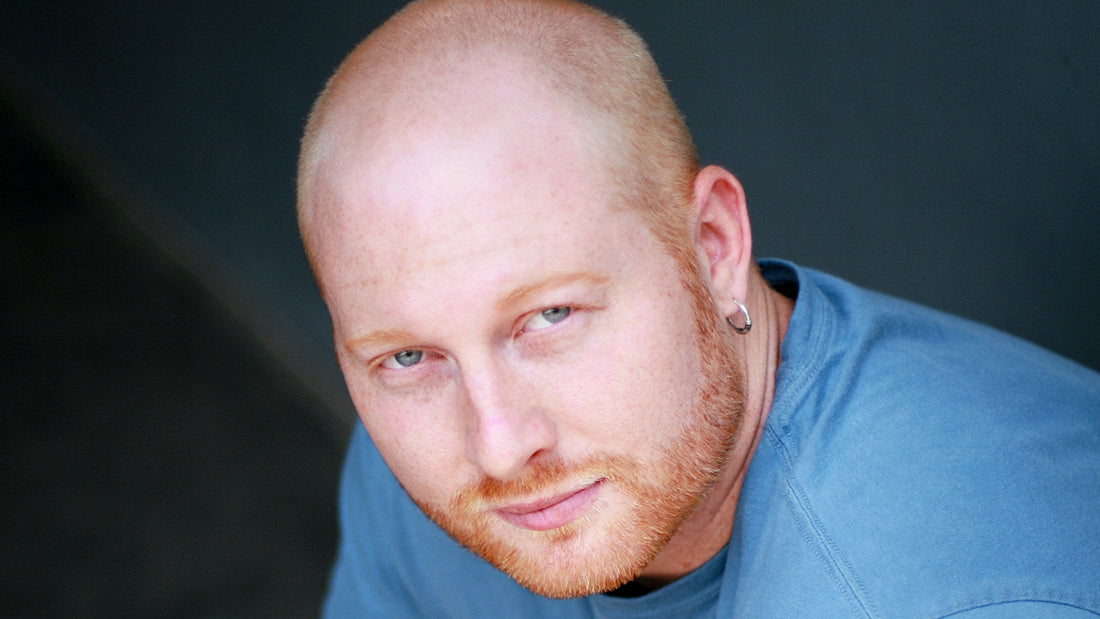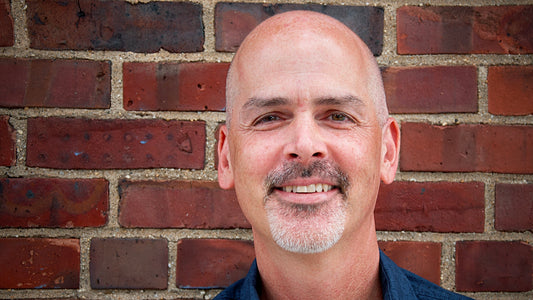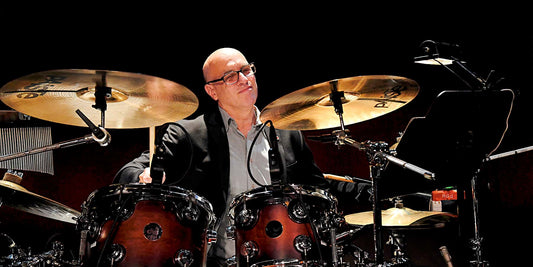
Conducting a National Tour
A Drummer/Conductors Perspective, from Two Sticks, to One.
By Danny Taylor
I had the privilege of holding both the drum and percussion chairs, as well as conducting the North American tour of Disney's Aladdin. In this article I hope to shed a little bit of light on what life on the podium is like, as well as the relationship between the drummer and the conductor.
Conducting A National Tour
Conducting a National Tour is incredibly challenging, but so rewarding. Stepping on to the podium with a new orchestra every few weeks really keeps you on your toes. Every player responds differently so you are constantly adjusting to get the desired result. I would compare it to playing a multi-percussion piece where the instruments are constantly moving. Cueing and being incredibly clear is so important since most of the players don’t have the time to really absorb the material. A technique that worked in the last city may not work in the next. The way you hear and see things is different as well since every theatre/pit has different dimensions.
One of the tools that proved to be very useful was wearing a talkback mic which allowed the conductor to communicate with the orchestra through their headphones.
Besides learning the new orchestra, if I was conducting it also meant that there was a sub playing either drums or percussion, depending on what book I was on in that city. Those subs only get to play the show a handful of times, so I try to do everything I can to make them as comfortable as possible. I’ll discuss preparing my subs in a future article. One of the tools that proved to be very useful was wearing a talkback mic which allowed the conductor to communicate with the orchestra through their headphones. This comes in very handy if an orchestra member gets lost, or a set piece gets stuck and we need to pause the show, or if an intoxicated audience member tries to climb on stage and you need to call back to the stage manager while getting the orchestra out of a vamp during a major sword fight (true story). I first used the talk back mic as the associate conductor on the Sister Act tour. Conducting that show also included playing the key 3 book, so the microphone was very handy when you couldn’t use your hands.
The Conductor/Drummer Relationship
There’s a reason that you often see the same conductor/drummer team working together. It is so important for the drummer to be perfectly in sync with the conductor. This can be achieved over time with different shows, or if it’s a short run, through open communication with each other. I believe an open dialogue between the conductor and drummer is essential to the overall success of the orchestra. When I started the Aladdin tour playing drums, I integrated a click into my setup that only I could hear. I did this primarily because it’s such a heavy dance show and I wanted to be able to have a reference point if we ever had to have a conversation about tempos. Over time, the “ghost click” began to play a bigger role.
After studying the score in preparation of conducting, I knew the exact moments the conductor needed me to follow and when I needed to lead.
As I mentioned, every orchestra responds differently, so by putting the drummer on a click that only they can hear, it allows the conductor to move the other players as needed, without leaving the drummer guessing as to what they’re trying to achieve. It also made it easier on my subs, so there was no question as to where the time should be. Having a system like that requires a lot of trust between the conductor and drummer. Even with the click, the drummer has to be so nuanced in regard to when they’re following and when they’re leading. After studying the score in preparation of conducting, I knew the exact moments the conductor needed me to follow and when I needed to lead. Knowing the score so well also allowed me to listen to every player in a much more detailed way, which informed how I had to respond to the conductor.
Thoughts From The Podium
After playing two different chairs and conducting the show, here are just a few take away thoughts I had.
- Part difficulty
In the percussion world, we are often asked to play some pretty difficult passages, usually involving quick choreography to multiple instruments. Aladdin is no different. It’s probably one of the most challenging books I’ve played. Even knowing how hard some of the quick changes were, on the podium, it didn’t matter. The notes needed to be there no matter what. As percussionists, it’s our job to do whatever it takes to create the music that was written for us.
- The Orchestral Delay
I’ll be brief, there’s no reason for it. If my prep beat is in time and my ictus is consistent, play with my downbeat. Unfortunately, we often have to deal with the delay and it just takes time to figure out how the orchestra will collectively respond to the baton. Very often on the tour we would remind the orchestra not to play “behind the stick”.
- Perspective
As players, we are always trying to read the conductor to figure out what they want. Some conductors are very animated, and some show no emotion at all. We often don’t understand why the conductor does or doesn’t do something. “Why did I get that cue last night and not tonight? Why did I get that look today? We’ve played that passage the same way every performance, why was it different this time?” What we don’t always know are the elements beyond the orchestra pit that are happening. Like that set piece that didn’t move as planned, or that an actor is sick and needs some help, or that the conductor had a bad meal between shows and is struggling to keep it down. For me personally, my face looks really angry when I’m concentrating, and conducting a show requires a LOT of concentration due to all of the elements to pay attention to. I have to make a conscious effort to make sure I smile every once in a while so I don’t scare the orchestra. The point being, don’t put too much weight into the reactions of a conductor, chances are it has nothing to do with you.
Try to keep in mind that there is only one conductor responsible for all of the musicians, actors, and stage managers (yes they take cues from us). And on top of that, it’s live theatre where the variables are always changing. In theatre, the conductor’s role goes beyond creating the best musical experience possible. They are responsible for making sure all of the elements come together in a cohesive way. In order to do that, they need every member of the team to be at the top of their game.
So, the next time you get frustrated with a conductor for something that may not make sense, try to be understanding of the big picture and do everything in your ability to create an unforgettable experience for the audience.
Bio:
Danny Taylor has played drums/percussion on the Broadway productions of In The Heights, Sister Act, Allegiance, and Aladdin. First National tour credits include Legally Blonde, Sister Act, and Aladdin. He can also be heard on the original studio recording of Disney’s Hunchback of Notre Dame.
Danny is currently enjoying his greatest gig yet, being a dad.
Danny proudly endorses Vater Drumsticks, Sabian Cymbals, LP Percussion, and Remo Drumheads.
You can stay in touch with Danny at RedDannyTaylor on Instagram, Facebook, and YouTube.




